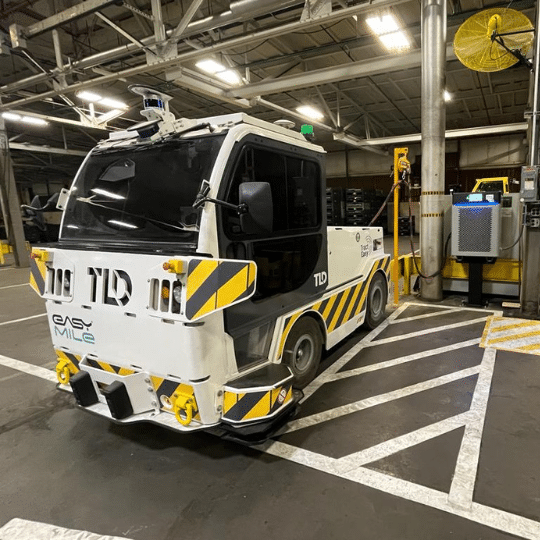Autonomous baggage towing in the snow at Oslo Gardermoen Airport
13 March 2024 -
Oslo Gardermoen Airport, Sweden
Written by Hamza Ouzouhou

News
As part of the AWARD H-2020 project, The EZTow autonomous tow tractor recently achieved a critical milestone at Oslo Airport, operating in snow at Level 4 of autonomous driving (completely independently without any human on board the vehicle), marking an important step in our commitment to delivering reliable and innovative autonomous mobility solutions. This phase, focused on evaluating the resilience of our sensor technology against the challenging weather conditions in Norway, was an integral part of the project.
Operating in harsh weather
The EZTow was subjected to a variety of harsh conditions, primarily aimed at assessing how well it can perform when visibility is reduced and sensors are at risk of impairment. The vehicle showcased its robustness, successfully navigating the harsh weather and proving the reliability of its sensors under environmental stress. Additionally, the completion of Taxi Lane Departure (TLD) tests demonstrated the vehicle’s ability to maintain precise navigation and adhere strictly to its designated path. The ongoing evaluation of winter tire grip is also a critical component of the tests, ensuring that the EZTow maintains optimal stability and maneuverability, even on icy surfaces.
Well-prepared for seamless integration
Julien Collier, EasyMile’s Project Coordinator, shared his insights on the achievement: “Adapting to snow conditions is a challenge we’re actively making progress on. We’ve conducted extensive tests, both simulated and on-site, allowing us to best integrate capabilities for driving in snow into operations. These tests are instrumental for the EZTow’s airport operations, ensuring seamless integration.”
Autonomous vehicles and snow
Operating in snowy conditions presents distinctive challenges for the perception algorithms of the vehicles, often leading to a dip in their confidence levels. The complexity of processing sensor signals is intensified when snow interferes, potentially causing the system to either miss detecting approaching objects or falsely perceive non-existent obstacles.
This dilemma stems from several factors unique to snowy environments. Firstly, the uniform appearance of snow-covered landscapes diminishes contrast, making it difficult for sensors to distinguish between actual objects and the snow itself. Additionally, snowflakes scattering in the air can distort the perceived location, distance, or angle of objects, leading to inaccurate readings. Perhaps most critically, the reliability of an autonomous system hinges on the consensus among inputs from multiple sensors. However, snow introduces distinct challenges to each sensor type, threatening the harmony and agreement needed for the system to form a coherent and accurate understanding of its surroundings. Addressing these challenges is pivotal for ensuring the safety and reliability of the EZTow in wintry conditions.


